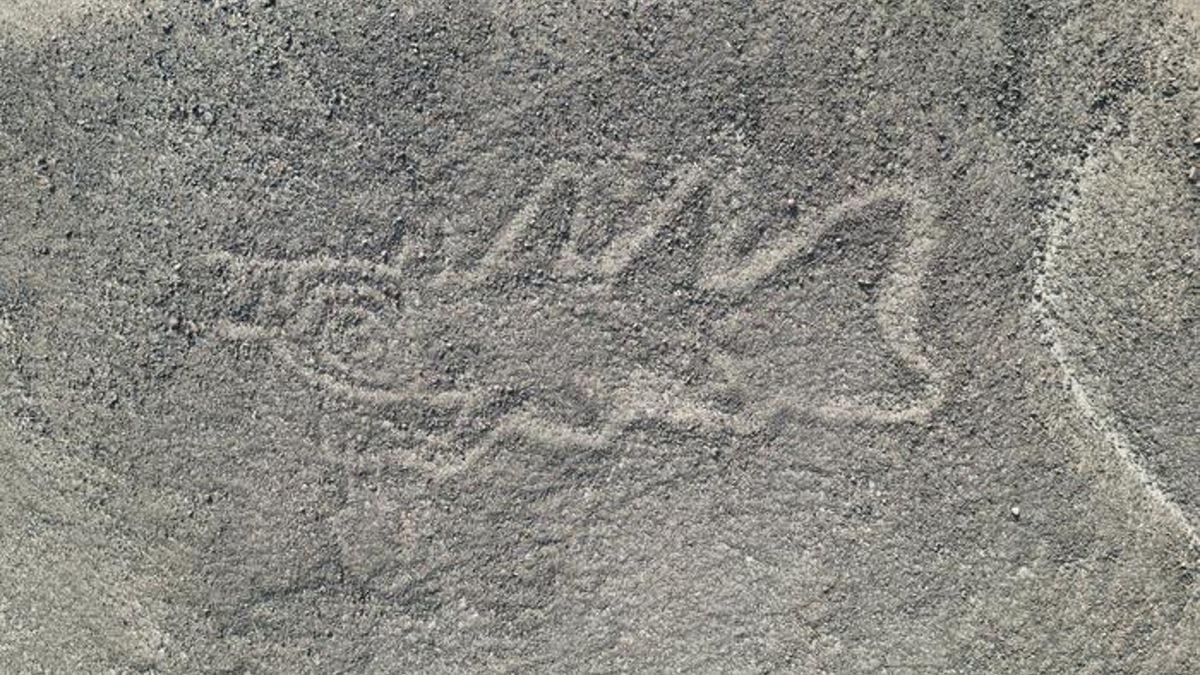Scientists have discovered more than 300 never-before-seen Nazca Lines in Peru — including alien-looking humanoid figures, decapitated heads, potential historic ceremonies and a surprisingly well-armed orca.
The staggering new haul was unearthed in just six months with the help of artificial intelligence (AI) and almost doubles the number of known geoglyphs in the region.
The Nazca Lines are a group of large human-carved geoglyphs located in a roughly 170-square-mile (440 square kilometers) area of Peru’s Nazca Desert. The ancient artworks were likely created between 200 B.C. to A.D. 500 by members of the pre-Incan civilization, known as the Nazca (or Nasca), who removed the upper layers of the desert’s red-tinged surface pebbles to reveal sections of lighter soil in a wide range of different shapes and sizes.
Researchers had already found around 430 Nazca Lines since the mysterious shapes were rediscovered by airplane passengers in the 1920s. Most of these geoglyphs were identified in the last 20 years thanks to advancements in satellite imagery. However, the rate at which new lines are being discovered has started to slow, and researchers suspect that any remaining shapes are too faint to be easily spotted by the human eye.
Related: Stunning images of the mysterious Nazca Lines in Peru
In the new study, published Monday (Sept. 23) in the journal PNAS, researchers used an AI model, which has been trained to spot the faint outlines of the geoglyphs, to search for missed shapes in satellite images of the Nazca Desert.
The model, which can pick out the lines 20 times quicker than humans, generated a list of Nazca Line candidates for the researchers to investigate, including ones in places where the famous lines had never been spotted before. Between September 2022 and February 2023, researchers visited some of these sites and were able to confirm that 303 of them were actual geoglyphs.
The new lines included abstract humanoids, “decapitated heads,” domesticated animals, fish, birds, cats, a potential “ceremonial scene” and human/animal interactions, researchers wrote in the paper. The most bizarre shape was arguably a 72-foot-long (22 meters) “killer whale holding a knife.”
The new study has already helped highlight crucial differences between the two main types of Nazca Lines: Relief-type geoglyphs, which are smaller and more intricate; and line-type geoglyphs, which cover a greater area and utilize more straight lines.
The study showed that a majority of the known relief-type geoglyphs (82%) depict humans or domesticated animals, while most line-type geoglyphs (64%) showcase wild animals, such as birds and whales.
Second, the team noticed that relief-type images were closer to historical trails, suggesting they were intended to be viewed by passersby. However, their line-type counterparts were evenly spaced out compared to one another, hinting that they were “probably built and used on a community level for ritual activities,” researchers wrote.
The AI from the new study has already identified hundreds of other potential geoglyph candidates that the team did not have time to evaluate in the recent study. As a result, the researchers estimate that they will find around 250 additional Nazca Lines when they get around to visiting these sites over the next few years.

